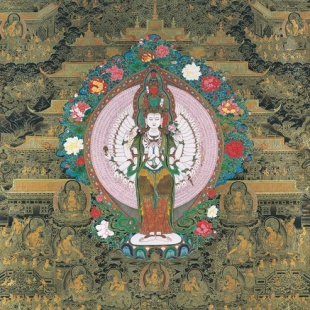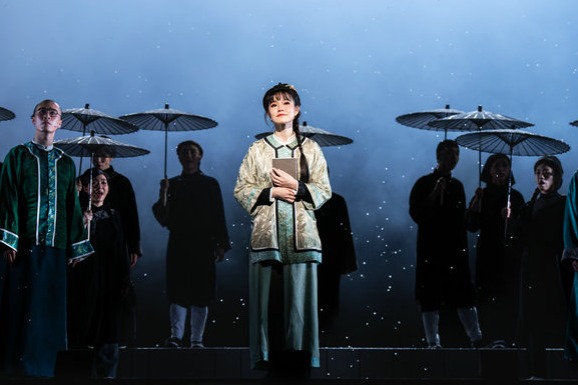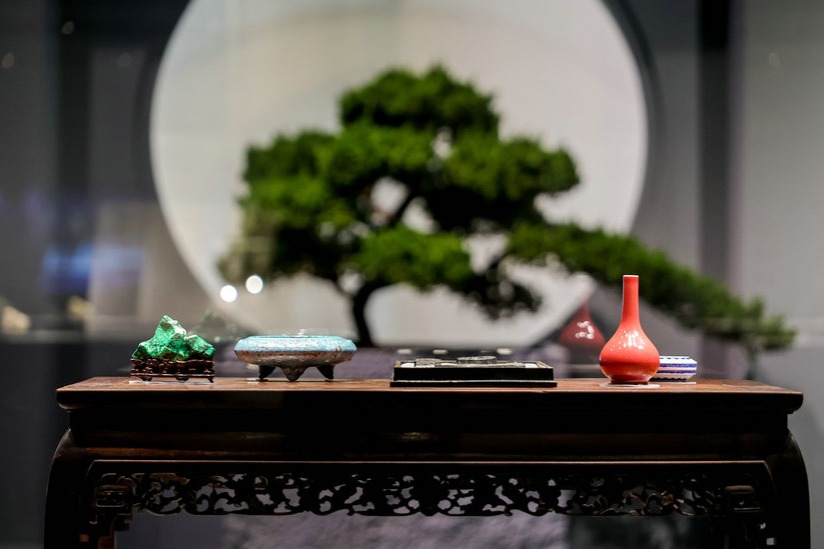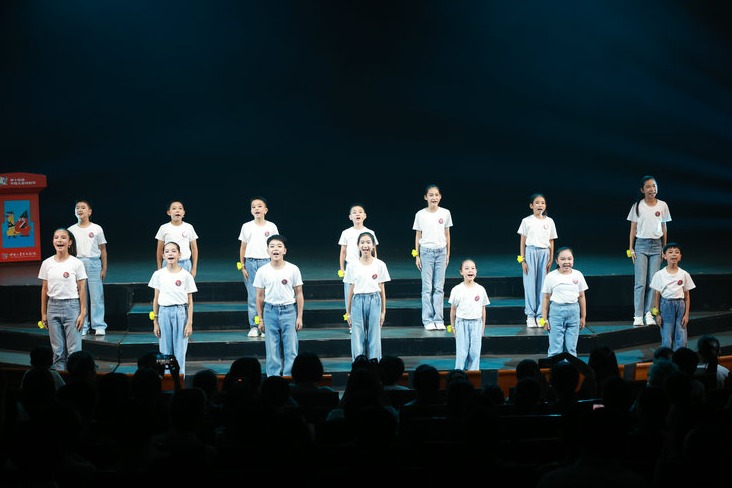Artist displays pride in culture
Thangka tradition motivates painter to show world its essence, Mingmei Li reports in New York.

The institute has been recognized as a national cultural industry demonstration base, a national intangible cultural heritage productive protection demonstration base, and a youth employment and entrepreneurship training base.
"Painting thangka is time-consuming and requires sincerity and patience," he says. "It takes an artist weeks, or even months, to finish a painting."
The pieces he brought to New York took an average of two to three months each to complete. They featured not only the vibrant, colorful Buddhist figures, but also the line-drawn sketches. These paintings displayed detailed color-mixing techniques that Nyingbum uses, with precious mineral pigments like gold, silver and cinnabar, along with natural dyes from plants, such as saffron and gardenia, which can make the art last for decades.
"It's amazing to see how so many beautiful works have been preserved because artists used mineral pigments," Nyingbum introduces. "Take the murals at Dunhuang, Gansu province, or the Potala Palace in the Xizang autonomous region, for example. They've stayed vibrant for hundreds of years without fading. That's something unique about our Eastern murals."
The use of natural mineral pigments allows thangka paintings to endure for millennia, giving them exceptional collectible value. The high-quality materials are also costly.
He says that the use of the pigments makes the art form hard to replace with today's digital painting — thangka art has strict requirements for color-mixing, outlining and more. It not only requires the meticulous techniques of traditional Chinese painting but also demands the artist's skill in grinding pigments and controlling temperature and humidity.
When painting Buddhist figures, Nyingbum likes to use bold, exaggerated colors on the statues' graceful forms, blending reality with imaginative settings to create a vivid artistic world. In contrast, when depicting real-life scenes, he uses natural colors to capture the simplicity of the landscape.
"These aren't just basic watercolors or oil paint colors — they are all carefully mixed and ground by hand. The process is complex. We need to grind the minerals daily; even small changes in pressure can subtly shift the color. For example, heavier grinding might produce one shade while a lighter grind gives you another," he says.
"Each step — drafting, coloring, shading, adding gold lines and drawing fine details — tests the artist's skills. The artist has to keep learning all the time: studying Buddhist culture, understanding the deeper meaning and putting real heart into thangka," he says. "We need to continue to refine our artistry and learn."
The thangka art form has more than 2,000 years of history in Tibetan and Buddhist-related culture. "The core message of thangka painting is to be kind and to do one's best to help others," says the artist.
It has been his faith that helped him persevere all these years and be committed to introducing this niche art form to more people, he adds.
He traveled to Chengdu, Sichuan province, from 1995 to 1997 to deepen his understanding of traditional Chinese gongbi painting techniques that require careful, meticulous depiction. He believes that thangka holds great potential for creativity, capable of portraying many aspects and fields, such as astronomy and geography, bridging ancient and modern themes.
To celebrate the Beijing 2008 Summer Olympics, the artist created three paintings of the Fuwa mascots that year, later collected by the Beijing Olympic Committee.
In 2009, he painted two works, Princess Wencheng's Journey to Tibet, symbolizing unity between the Han and Tibetan ethnic groups, and The Founding Ceremony, celebrating the establishment of the People's Republic of China in 1949, both donated to the State Council.
That year, he also created The Tenth Anniversary of Macao's Return to China, which he donated to the Macao Special Administrative Region. He received the first Chinese Youth Arts Award in 2011 and in 2013 earned the title of Chinese Master of Arts and Crafts, granted by the State Council.
"Creating works with such themes fills me with pride," says the Tibetan artist. "These pieces reflect the harmony and unity among our nation's 56 ethnic groups. Anyone who sees them feels a deep connection."
Promoting thangka art overseas is difficult, he says, but his passion for sharing its beauty keeps him motivated. "It's my responsibility and I hope this Tibetan culture can be preserved by more artists," he says.
"Art knows no borders and this painting technique is truly rare. We hope that thangka art can be appreciated and loved by more people in the US and the world."
Philanthropist Steven Rockefeller, host of the exhibition, who represented the Rockefeller family's support for the event, says that the parallels of the dramatic natural landscapes served as symbolism to the harmony of all our best efforts in cultural exchange.
Lily Li, organizer of the event, says that "bringing Nyingbum's art to New York is a monumental occasion. This city, a global hub of art and culture, provides the perfect platform to introduce thangka to an eager new audience".
"It underscores the importance of preserving such traditions in our rapidly globalizing world, fostering a culture of sharing that enriches us all," Li adds.
"This exhibition is more than a display of artistic mastery. It is a celebration of a man whose life's work bridges the gap between ancient traditions and the modern world."






































